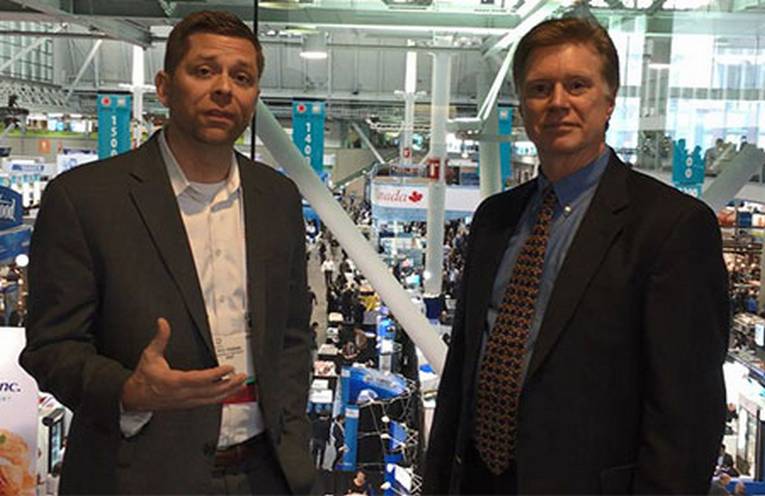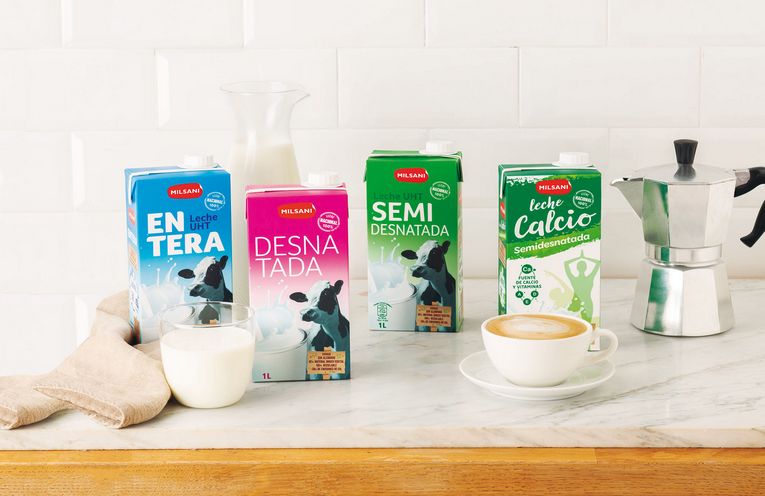Globally, it is estimated that 35 percent of all consumable fish and seafood is wasted, and distribution and logistical challenges account for nearly 10 percent of supply chain losses. With one in nine people suffering from chronic undernourishment, and the demand for nutritious proteins on the rise, it’s critical that we reduce waste.
At the Seafood Expo in Boston, Ron Cotterman, Vice President of Sustainability with Sealed Air Corporation, and Pete Pearson, Director of Food Waste with World Wildlife Fund, led a panel to discuss how each entity from sea to fork plays a role in preventing food loss and waste. After the panel, Ron and Pete kept talking about the issue, here’s a look at that conversation:
Ron: We know that waste occurs all along the food supply chain. Pete, you’ve led national sustainability programs within the retail grocery sector. What are some of the key opportunities for reducing waste at the retail level?
Pete: Any time you have waste, it represents a design flaw. This was my first time attending the Boston Seafood Expo and it reaffirmed my observation that there is significant emphasis on merchandising and product marketing displays in the seafood industry. We need to get creative and drive seafood sales without fish spoiling over ice. With so many of our oceans fully exploited and some near the brink of collapse, the way we sell seafood has to change. There is loss and waste at all points in the supply chain. If we were to redesign our system with zero tolerance for loss and waste, retail presentation of seafood would probably look very different – different packages, lower temperatures and a re-education to consumers on what “fresh” really is.
Ron: That’s a good point. “Fresh” can mean different things depending on where you are in the world. In many parts of Asia, live fish or fish on ice are still very common, but this leads waste in retail and in homes. In the U.S., consumers generally prefer thawed versus frozen fish and seafood. Still, retailers often report throwing out an average of 5 to 20 percent of all products from refrigerated cases. Whatever the preference, packaging and lower temperatures can make a big difference in keeping food fresher for a longer period of time.
Pete: That’s important because when you lose or waste fish and seafood, we have to remember that we’re throwing away wildlife caught from the ocean. When talking about farmed seafood, it represents a waste of the energy, feed and resources that go into growing that product, in addition to all the transportation and refrigeration costs.
Ron: The good news is that we’re seeing a lot of innovations and technologies that are making a difference. Better temperature control, better traceability and better packaging solutions are a part of that equation. One of the challenges though is communicating that to consumers. What is WWF doing to help educate consumers about food waste?
Pete: As a starting point, WWF’s campaign is about getting everyone, both businesses and consumers, to understand the implications of food loss and waste. Wildlife habitat and the health of fisheries are in jeopardy due to pressure from the food system. WWF is sponsoring research looking at consumer waste patterns and loss and waste throughout the seafood supply chain. Waste has to be measured to be managed and all actors in the system should consider making more data transparent so that everyone in the value chain can learn from each other. When we measure loss and waste, we begin to understand the benefits and trade-offs of shelf-life solutions like better packaging and temperature control.
Ron: So it’s not just saying “food waste is a problem,” it’s also showing people how they can help resolve it. And there are plenty of benefits to resolving it, including economic benefits. Champions 12.3 surveyed 2100 organizations and found that for every dollar invested in preventing food waste, there was a $14 return on investment. Whether in foodservice, retail or the consumer’s home kitchen, there are opportunities to save.
Pete: If we continue to tolerate food loss and waste, we simply won’t have anything left for future generations and a growing affluent population. The cost of inaction to my children and grandchildren is extremely high. From an environmental perspective, we are reaching planetary boundaries. If we can show people there are wonderful ways to enjoy fish and seafood in a highly efficient, waste-free and sustainable way, that’s a win for everyone. We need to challenge our consumer definitions of “fresh” and begin measuring our progress towards a system that can deliver high quality products to retail and food service customers while eliminating waste at all levels of the supply chain.
Listen to the recording below of Ron and Pete’s panel on combating waste in the global fish and seafood industry.
Share your feedback with Sealed Air on Twitter at @SealedAirFood and World Wildlife Fund at @BalanceWWF.
Learn more about the work Sealed Air and WWF are doing together to combat food waste.
forrás: sealedair.com 2018.07.19.





